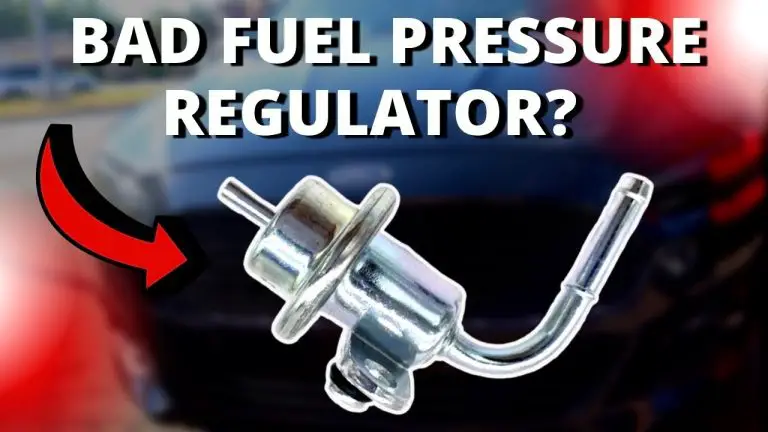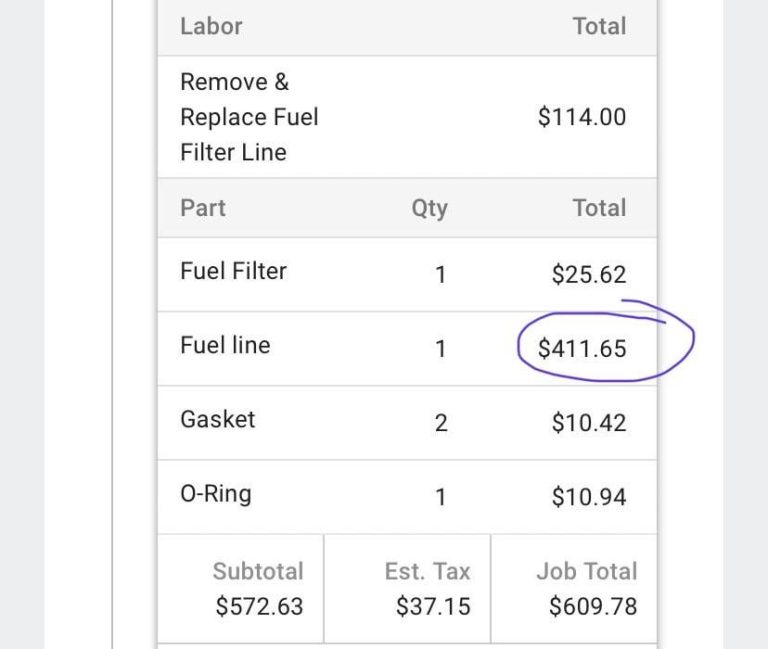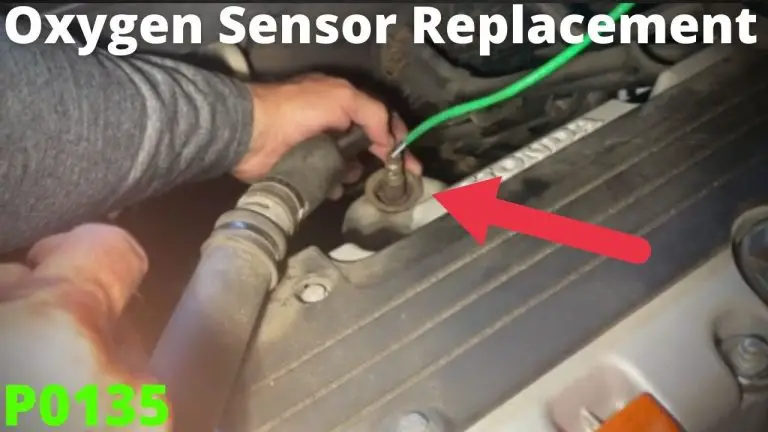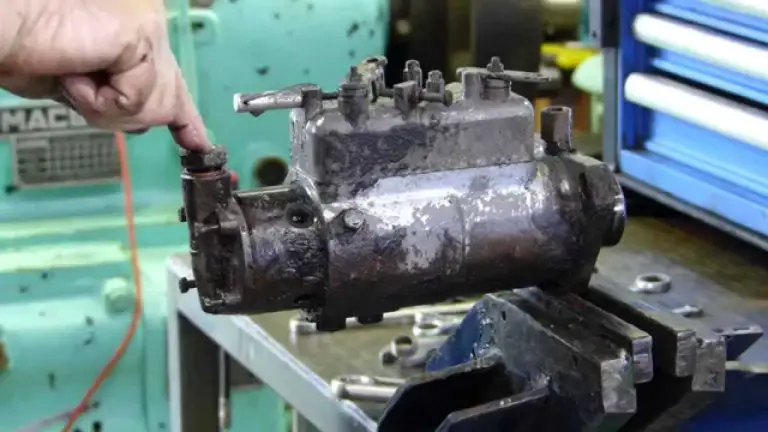Symptoms of a Bad MDS Solenoid [Comprehensive Guide]
Welcome to our blog post where we delve into the signs and symptoms of a bad MDS solenoid and its crucial role in engine performance. In today’s automotive industry, technological advancements continue to shape the way vehicles operate, and one such innovation is the Multiple Displacement System (MDS).
At the heart of this system lies the MDS solenoid, a vital component responsible for regulating the activation and deactivation of specific engine cylinders.
In this article, we will explore the function and significance of the MDS solenoid in engine performance. We’ll also shed light on the telltale signs of a faulty solenoid. By understanding the role of the MDS solenoid and recognizing the symptoms of its malfunction, vehicle owners can take proactive measures to ensure optimal engine performance and fuel efficiency.
Join us as we unlock the mysteries of the MDS solenoid and its impact on your vehicle’s overall performance.
Overview of MDS Solenoid Function
MDS System and its Purpose
The MDS (Multi-Displacement System) is an engine technology used in certain vehicles to improve fuel efficiency. The purpose of the MDS system is to deactivate a portion of the engine’s cylinders under light load conditions, where less power is required. By deactivating cylinders, the engine can operate more efficiently, consuming less fuel.
Role of MDS Solenoid in Controlling Cylinder Deactivation
The MDS solenoid plays a crucial role in controlling the cylinder deactivation process within the MDS system. It is responsible for activating or deactivating the hydraulic valve lifters, which in turn control the movement of the engine’s valves.
When the MDS system detects suitable conditions for cylinder deactivation, it sends a signal to the MDS solenoid. The solenoid then engages to regulate the flow of oil to the hydraulic valve lifters. By controlling the flow of oil, the MDS solenoid can either allow the lifters to function normally or prevent them from actuating the valves, leading to cylinder deactivation.
How MDS Solenoid Operates and Interacts with the Engine’s Electrical System
The MDS solenoid is an electromagnetic device that operates based on electrical signals. It is typically controlled by the engine control unit (ECU), which constantly monitors various parameters such as engine load, throttle position, vehicle speed, and other relevant factors.
When the ECU determines that cylinder deactivation is suitable, it sends a specific command signal to the MDS solenoid. This signal triggers the solenoid to actuate, allowing oil flow to control the hydraulic valve lifters accordingly.
The MDS solenoid interacts with the engine’s electrical system through wiring harnesses and connectors. It receives power from the electrical system and communicates with the ECU through these connections. The ECU uses input from various sensors to determine the appropriate times for cylinder deactivation and sends corresponding signals to the MDS solenoid.
Overall, the MDS solenoid is a crucial component of the MDS system, responsible for controlling the cylinder deactivation process. By effectively managing the flow of oil to the hydraulic valve lifters, it enables the engine to optimize fuel efficiency by deactivating cylinders when not needed.
Common Signs and Symptoms of a Bad MDS Solenoid
Engine Misfires
Engine misfires refer to the incomplete combustion of fuel in one or more cylinders of an internal combustion engine. They can be caused by various factors, including issues related to the MDS (Multi-Displacement System) solenoid. Here’s a closer look at the connection between engine misfires and the MDS solenoid:
1. MDS Solenoid Malfunction: The MDS solenoid is responsible for controlling cylinder deactivation in engines equipped with MDS technology. If the solenoid malfunctions or fails to operate correctly, it can disrupt the cylinder deactivation process. This can lead to imbalances in the combustion process, resulting in misfires.
2. Inadequate Valve Actuation: The MDS solenoid controls the flow of oil to the hydraulic valve lifters, which in turn actuate the engine’s valves. If the solenoid fails to properly activate or deactivate the lifters, it can cause issues with the valve timing and duration. This can result in misfires as the fuel and air mixture is not properly controlled or ignited.
3. Oil Flow Problems: The MDS solenoid relies on the proper flow of oil to function effectively. If there are issues with oil pressure, oil contamination, or blockages in the oil passages, it can affect the operation of the solenoid. Insufficient or inconsistent oil flow to the hydraulic valve lifters can lead to misfires.
Increased Fuel Consumption
Increased fuel consumption can be attributed to various factors, including issues related to the MDS (Multi-Displacement System) solenoid. While the MDS system is designed to improve fuel efficiency by deactivating cylinders under light load conditions, malfunctions in the solenoid or other components can affect its effectiveness. Here are a few possible causes:
1. MDS Solenoid Malfunction: If the MDS solenoid is not functioning properly, it may not activate or deactivate the hydraulic valve lifters correctly. This can result in cylinders remaining active when they should be deactivated, leading to increased fuel consumption. Additionally, if the solenoid is stuck in the deactivated position, the engine may not be able to achieve maximum power and efficiency when all cylinders are needed.
2. Incorrect Cylinder Activation/Deactivation: The MDS system relies on accurate information from various sensors to determine the appropriate times for cylinder deactivation. If there are sensor malfunctions or inaccuracies, the MDS system may not activate or deactivate cylinders optimally. This can result in unnecessary fuel consumption as cylinders may remain active when they could be deactivated or vice versa.
3. Other Engine Issues: Increased fuel consumption can also be caused by various other engine-related problems. For example, issues with the fuel injectors, spark plugs, air intake system, or exhaust system can lead to inefficient combustion and higher fuel consumption.
Illuminated Check Engine Light
When the Check Engine Light (CEL) is illuminated on your vehicle’s dashboard, it indicates that the engine management system has detected a potential issue or malfunction. While the CEL can be triggered by various factors, including non-MDS-related problems, it could also be related to the MDS (Multi-Displacement System) solenoid or its associated components. Here’s what you should know:
1. MDS Solenoid Malfunction: A faulty MDS solenoid or related components can trigger the Check Engine Light. If the solenoid is not operating as intended, it can cause issues with cylinder deactivation, leading to engine performance problems and increased emissions. The engine control unit (ECU) detects these irregularities and illuminates the CEL to alert the driver.
2. Sensor Malfunction: The MDS system relies on various sensors to monitor engine conditions and determine when to activate or deactivate cylinders. If one or more of these sensors malfunctions, it can affect the operation of the MDS solenoid, potentially leading to a Check Engine Light illumination.
3. Other Engine-Related Issues: It’s important to note that the Check Engine Light can also indicate other engine-related problems unrelated to the MDS system. These issues can range from malfunctioning sensors to problems with the fuel system, ignition system, emissions control components, or other engine management systems.
Engine Performance Issues
Engine performance issues can manifest in different ways, such as hesitation or sluggish acceleration, as well as reduced power output and responsiveness. These symptoms can be indicative of various underlying problems with the engine, including issues related to the MDS (Multi-Displacement System) solenoid. Here’s an overview of these performance issues:
1. Hesitation or Sluggish Acceleration: If your vehicle experiences hesitation or a delay in acceleration when you press the gas pedal, it can be a sign of an engine performance issue. In the context of the MDS system, a malfunctioning MDS solenoid can disrupt the proper activation or deactivation of cylinders. This can lead to imbalances in the combustion process and cause a hesitation or sluggishness in acceleration. Other factors, such as fuel delivery problems, ignition issues, or clogged fuel injectors, can also contribute to this symptom.
2. Reduced Power Output and Responsiveness: When the engine’s power output and responsiveness decrease, it can be an indication of an underlying issue. A faulty MDS solenoid or problems with the MDS system can disrupt the engine’s ability to optimize power delivery. If the solenoid fails to activate the appropriate cylinders, it can result in a decrease in power output and responsiveness. Other potential causes of reduced power output include issues with the fuel system, air intake restrictions, ignition problems, or engine misfires.
Abnormal Engine Noises
Abnormal engine noises can indicate various issues, including problems related to the MDS (Multi-Displacement System) solenoid. When the MDS solenoid fails or malfunctions, it can lead to specific noises that are worth paying attention to. Here are a few examples of abnormal engine noises related to MDS solenoid failure and their potential causes:
1. Ticking or Clicking Noise: A ticking or clicking noise from the engine can occur when the MDS solenoid or associated components are not functioning correctly. This sound is often caused by irregular oil flow to the hydraulic valve lifters, which can result from a malfunctioning solenoid. Insufficient or inconsistent oil flow can lead to valve lifters not actuating properly, causing the ticking or clicking noise.
2. Whining or Grinding Noise: A whining or grinding noise can be an indication of problems with the MDS solenoid or its associated components. This noise can occur when there are issues with the solenoid’s internal mechanisms or when it is not engaging or disengaging the hydraulic valve lifters smoothly. The grinding noise may be more pronounced if there is metal-to-metal contact within the solenoid assembly.
3. Rattling or Knocking Noise: In some cases, a rattling or knocking noise can be associated with MDS solenoid failure. If the solenoid is not functioning correctly and causing cylinder deactivation issues, it can result in engine misfires or uneven combustion. This, in turn, can lead to a rattling or knocking noise, which may be more noticeable under load or during acceleration.
Diagnosing and Repairing a Bad MDS Solenoid
Diagnosing and repairing a bad MDS (Multi-Displacement System) solenoid can be a complex task that requires specialized tools and expertise. Here’s why:
1. Complex Troubleshooting: The MDS system is a sophisticated engine technology that involves multiple components, including the MDS solenoid, hydraulic valve lifters, sensors, and the engine control unit (ECU). When diagnosing a bad MDS solenoid, it’s crucial to rule out other potential causes of the issue, such as sensor malfunctions, wiring problems, or oil flow issues. This requires a systematic approach and the ability to interpret data from diagnostic tools.
2. Specialized Tools: Troubleshooting the MDS system and identifying a faulty MDS solenoid often requires specialized tools. These tools can read error codes, access live data from sensors, and perform actuation tests on the solenoid. Additionally, certain vehicles may require specific manufacturer-specific diagnostic equipment to accurately diagnose and repair MDS-related issues.
3. Expertise and Technical Knowledge: The MDS system is designed differently by different manufacturers, and the specific troubleshooting procedures can vary. It’s essential to have expertise and technical knowledge in the specific MDS system used in your vehicle. A trained mechanic familiar with MDS systems will have a deeper understanding of the system’s functioning, potential failure points, and the necessary steps to diagnose and repair the MDS solenoid effectively.
4. ECU Programming and Calibration: In some cases, repairing or replacing a bad MDS solenoid may require ECU programming or calibration. This process ensures that the new solenoid is correctly recognized by the ECU and operates within the specified parameters. Specialized software and equipment are necessary to perform these tasks accurately.
Steps for Diagnosis
When diagnosing issues related to the MDS (Multi-Displacement System) solenoid or other engine components, following proper diagnostic procedures is crucial. Here are the general steps involved in the diagnosis process:
1. Preliminary Inspection: Begin by visually inspecting the engine bay for any obvious signs of damage, leaks, or loose connections. Check the MDS solenoid and its wiring harness for physical damage or loose connections.
2. Code Scanning: Use a diagnostic scan tool to retrieve error codes stored in the engine control unit (ECU). These codes provide a starting point for diagnosing the issue. Pay particular attention to codes related to the MDS system or cylinder deactivation.
3. Data Analysis: With the scan tool, access live data from various engine sensors and the MDS system. Monitor parameters such as engine speed, coolant temperature, throttle position, and MDS solenoid activation. Look for any abnormalities or discrepancies that could be related to the MDS solenoid.
4. Functional Tests: Use the diagnostic tools to perform functional tests on the MDS solenoid. This can include activating and deactivating the solenoid while monitoring the associated changes in engine parameters. Verify that the solenoid is responding correctly and actuating the hydraulic valve lifters as expected.
5. Electrical Testing: If necessary, perform electrical tests on the MDS solenoid and its wiring harness. Use a multimeter to check for proper voltage supply, continuity, and resistance. Inspect for any shorts, open circuits, or faulty connections.
6. Component Inspection: Inspect the MDS solenoid and its related components for physical damage, clogs, or signs of wear. Ensure that the solenoid is free of debris and that the oil passages are clean and unobstructed.
7. Collaboration with Manufacturer Information: Consult manufacturer-specific repair manuals, technical bulletins, or online resources for any specific diagnostic procedures or known issues related to the MDS system in your vehicle.
Throughout the diagnostic process, it’s important to document the findings, including any error codes, observed data, and test results. This information will help guide the repair process and facilitate communication with a qualified mechanic or dealership if needed.
Using diagnostic tools such as scan tools and multimeters is crucial for accurate diagnosis. Scan tools allow for code retrieval, data monitoring, and functional tests, while multimeters help measure electrical values. These tools provide valuable insights into the operation of the MDS solenoid and associated components.
Repair and Replacement Options
When it comes to repairing or replacing a faulty MDS (Multi-Displacement System) solenoid, there are several options available. Here are the common repair and replacement options to consider:
1. Solenoid Cleaning: The MDS solenoid may be clogged or obstructed by debris or sludge, causing it to malfunction. In such situations, a thorough cleaning of the solenoid and its associated components may restore its functionality. However, this option is only suitable if the solenoid itself is in good condition and not damaged.
2. Solenoid Repair: Depending on the specific issue with the MDS solenoid, it may be possible to repair certain components or replace individual parts rather than replacing the entire solenoid assembly. This option requires expertise in solenoid repair and access to the necessary spare parts.
3. Solenoid Replacement: If the MDS solenoid is severely damaged, has internal failures, or cannot be repaired, a complete replacement is often necessary. This involves removing the faulty solenoid and installing a new one in its place. It’s important to ensure that the replacement solenoid is compatible with the specific make, model, and year of your vehicle.
When considering replacement options, it is highly recommended to use either OEM (Original Equipment Manufacturer) parts or high-quality aftermarket parts. Here’s why:
1. OEM Parts: OEM parts are manufactured by the original equipment manufacturer, ensuring they meet the manufacturer’s specifications and quality standards. These parts are designed to fit and function seamlessly within your vehicle’s system. Using OEM parts helps maintain the integrity of the MDS system and ensures proper compatibility and performance.
2. High-Quality Aftermarket Parts: If OEM parts are not readily available or if you prefer alternatives, choosing high-quality aftermarket parts from reputable manufacturers is essential. Look for parts that are specifically designed for your vehicle’s make and model. These parts should meet or exceed OEM standards to ensure proper functionality and durability.
Using low-quality or generic aftermarket parts can lead to compatibility issues, reduced performance, and a shorter lifespan. They may not operate optimally within the MDS system, potentially causing further problems or premature failure.
What are the contact details and availability of the service team?
Our service team can be reached through various channels and is available to assist you seven days a week. You can contact them by calling 1 (855) 347-2779 or by sending an email to hi@yourmechanic.com. Our team is dedicated to serving you promptly and efficiently.
Regarding their availability, the service team operates Monday through Friday from 6 AM to 5 PM PST. They also provide assistance on weekends, specifically Saturday and Sunday, with hours from 7 AM to 4 PM PST. This extended availability ensures that you can reach out to our service team at a time that is convenient for you, enabling us to address your queries and concerns promptly.
What are some other car brands and services offered?
Here are some other car brands and services offered:
Car Brands:
- Saab
- Pontiac
- Mini
- Dodge
- Saturn
- Ford Explorer
- Honda Pilot
- Toyota Prius
- Ford Taurus
- Toyota Corolla
Services:
- Timing Belt Tensioner Replacement
- Brake Rotor/Disc Replacement
- Alternator Replacement
- Spark Plugs Replacement
- Brake Pads Replacement
- Maintenance services for various car models
Who are the available mechanics with their years of experience and reviews?
Available Mechanics with Their Years of Experience and Reviews:
- William: With 23 years of experience, William has received 33 reviews.
- Dan: With an impressive experience of 40 years, Dan has garnered 1080 reviews.
- Christopher: Although relatively less experienced with 9 years, Christopher has received 120 reviews.
Please let me know if there is anything else I can assist you with!
Are there any additional comments or considerations regarding the P3427 code?
When dealing with the P3427 code, it is essential to note that the diagnostic and repair process can be quite complex. In some instances, the issue may necessitate disassembling the entire engine to address the problem effectively. This task can be intricate and time-consuming, even for experienced technicians. Therefore, it is crucial to conduct thorough research and gather as much relevant information as possible before attempting to dismantle the engine. Taking the time to acquire the necessary knowledge and understanding of the potential challenges involved will contribute to a successful resolution of the P3427 code.
How serious is the P3427 code?
The P3427 code indicates that the vehicle is operating on only four cylinders instead of the intended eight. While this code may not be as severe as some other codes, it still requires immediate attention. Ignoring it can lead to an increase in engine emissions and a loss of fuel economy. Although the immediate consequences may not be severe, failure to address the issue promptly could potentially result in irreversible damage to the vehicle over time.
What are some common mistakes when diagnosing the P3427 code?
When diagnosing the P3427 code, there are several common mistakes that people often make. One such mistake is failing to check the oil passageways for any dirt or sludge buildup. It is crucial to thoroughly inspect these passageways as clogged oil passages can lead to a decrease in engine oil pressure. This drop in pressure can then prevent the proper operation of the cylinder deactivation solenoids and lifters when switching from V4 to V8 mode. Therefore, always ensure that you carefully examine the oil passageways to accurately diagnose the issue at hand.
When diagnosing the P3427 code, there are several common mistakes that people often make. One such mistake is failing to check the oil passageways for any dirt or sludge buildup. It is crucial to thoroughly inspect these passageways as clogged oil passages can lead to a decrease in engine oil pressure. This drop in pressure can then prevent the proper operation of the cylinder deactivation solenoids and lifters when switching from V4 to V8 mode. Therefore, always ensure that you carefully examine the oil passageways to accurately diagnose the issue at hand.
How does a mechanic diagnose the P3427 code?
To diagnose the P3427 code, a mechanic should follow these steps:
- Begin by checking the engine oil levels and oil pressure to ensure they are at the correct levels. This can be done using an OBD-II scanner.
- Utilize the OBD-II scanner to gather all diagnostic trouble codes stored by the powertrain control module (PCM). It is important to address any other deactivation or oil pressure trouble codes stored by the PCM first.
- Clear any trouble codes using the OBD-II scanner and proceed to test the cylinder deactivation solenoid #1. This can be done by actuating the cylinder with a scan tool.
- A properly functioning solenoid will vibrate and produce a small clicking noise. If the cylinder deactivation solenoid #1 is not behaving correctly or not functioning at all, it is recommended to inspect the oil passages for any debris. If deemed necessary, clean the oil passages.
- After addressing any debris in the oil passages, the next step is to replace the solenoid with a new one.
By following these steps, a mechanic can effectively diagnose and resolve the P3427 code issue.
Can you drive with a bad MDS solenoid?
In most cases, yes, you can drive with a bad MDS solenoid. It likely won’t cause immediate engine damage, but there can be some negative consequences. Here’s a breakdown of what to consider:
Driving with a Bad MDS Solenoid:
- Reduced Performance: You’ll likely experience sluggish acceleration and a lack of power, especially when demanding more from the engine.
- Fuel Economy Issues: The MDS system is designed to improve fuel economy, so a faulty solenoid can negate those benefits and lead to lower gas mileage.
- Rough Idling: The engine might vibrate or shudder more than usual, particularly at idle, due to improper cylinder deactivation/activation.
- Check Engine Light: The light will likely come on, indicating a problem with the MDS system.
Potential Long-Term Issues:
- Uneven Engine Wear: While not a guaranteed consequence, some experts suggest that constantly running in 4-cylinder mode could lead to uneven wear on the cylinders that are constantly active.
- Increased Emissions: Lower fuel efficiency can also contribute to higher emissions.
Recommendations:
- While driving with a bad MDS solenoid isn’t necessarily dangerous, it’s not ideal. If you can, it’s best to get it addressed by a mechanic to restore proper engine function and fuel efficiency.
- If you do choose to drive with it for a short time until you can get a repair, avoiding situations that put a heavy load on the engine is wise.
What are the frequently asked questions about how to tell if an MDS solenoid is bad?
Certainly! Frequently asked questions about how to determine if an MDS solenoid is bad include: 1. What are the symptoms of a bad cylinder deactivation solenoid?
Symptoms of a bad cylinder deactivation solenoid may include loss of fuel efficiency, loss of power, and compromised engine performance.
2. Can you drive with a bad MDS solenoid?
The ability to drive with a bad MDS solenoid depends on its location within the vehicle. For instance, if the bad solenoid is related to the starter, you may be able to drive until you turn off the engine. However, if the solenoid is in the transmission, it could potentially affect high gear operation and should be addressed promptly.
3. What causes an MDS solenoid to fail?
An MDS solenoid may fail due to various reasons, including electrical issues or mechanical malfunction.
4. What does an MDS solenoid do?
The MDS solenoid plays a crucial role in regulating the cylinder deactivation system, which ultimately enhances engine performance and fuel efficiency.
5. How do you test a MDS solenoid?
Testing an MDS solenoid effectively requires specialized tools and a grasp of proper procedures. It’s generally recommended to consult a qualified mechanic for diagnosis.
6. What does the MDS solenoid do?
The MDS solenoid controls oil pressure to deactivate cylinders in your engine during specific conditions to improve fuel economy. This system is often used in vehicles with large engines (e.g., V8) to temporarily run on fewer cylinders when less power is needed.






